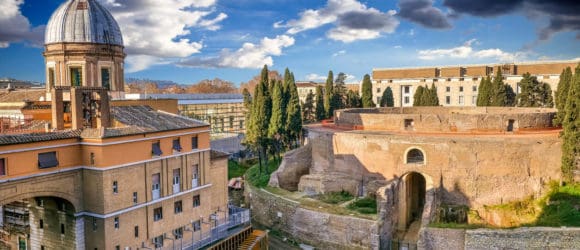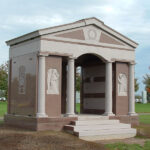About the Mausoleum of Augustus

For centuries, artists have been creating things of great beauty to celebrate a person’s or family’s contributions to society. Some of those things have become an important part of our cultural heritage, such as the Mausoleum of Augustus. Let’s learn about the Mausoleum of Augustus – a monument to Emperor Augustus – as you consider how you wish to be remembered.
The Significance of the Augustus Mausoleum in Ancient Rome
The Mausoleum of Augustus (Mausoleo di Augusto) was built as a statement piece by the thirty-year-old adopted heir to Julius Caesar. Gaius Octavius, who would become Emperor Augustus, built the enormous and elaborate tomb on the Campus Martius, or ancient military training grounds in Rome, Italy. However, the building was more than a place to hold ashes. It represented the political ambitions of Augustus and his family and made a public statement about his aspirations for a permanent rule.
The mausoleum was built in 28 BC on the Piazza Augusto Imperatore, near the corner with Via di Ripetta as it runs along the Tiber River. It was one of the first projects the great leader commissioned.
The circular building consisted of several concentric walls of earth and brick, faced with travertine on the exterior walls. The structure was topped with a cone-shaped roof and a huge bronze statue of the emperor.
The structure was grand. Two pink granite obelisks flanked the mausoleum’s arched entryway. (One still stands on the north-west side of the Basilica of Santa Maria Maggiore and the other at the horse fountain in Piazza del Quirinale.) Inside the interior walls, a chamber with three niches held the gold urns of the Imperial Family. Nearby bronze plaques were placed at the site after Augustus’ death and told the story of his accomplishments and victories.
The Mausoleum Throughout the Ages
During the Middle Ages, this mausoleum was made into a fortress like other monuments from modern and Ancient Rome. It was later made into a hanging garden. During the 18th century, it was the site of a bull-fighting arena and circus acts before being turned into a concert hall.
Dictator Benito Mussolini, seeing himself as a “reborn Augustus,” ordered a full restoration of this key monument in the 1930s. The restoration work of the Mausoleum of Augustus featured in Mussolini’s ambitious reordering of the city of Rome, which strove to connect the aspirations of the fascist era with the former glories of the Roman Empire.
Visit the Mausoleum of Augustus
Students studying the history of Gaius Octavius and later emperors would undoubtedly gain a lot from visiting the mausoleum. The grounds cover an area equivalent to a few city blocks, with the mausoleum nestled between the church of San Carlo al Corso and the Ara Pacis Museum.
As you travel the world, you may find yourself visiting many tombs of great people and their families. How will you tell subsequent generations about your family’s history?
As you consider your legacy, consider these frequently asked questions about building modern mausoleums. Forever Legacy is the premier builder of private family mausoleums in North America. We would love to answer your questions in person – request a consultation today.
Belinda McLeod has a degree in Secondary Education, specializing in English and Journalism. She began her career as a freelance writer in 2018 since a flexible schedule would allow her to help care for an aging parent. Since then, Belinda has specialized in writing for the funeral industry. Belinda has written for Cake, a funeral-planning website, nursing homes, mausoleum companies, cremation companies, and funeral homes.
